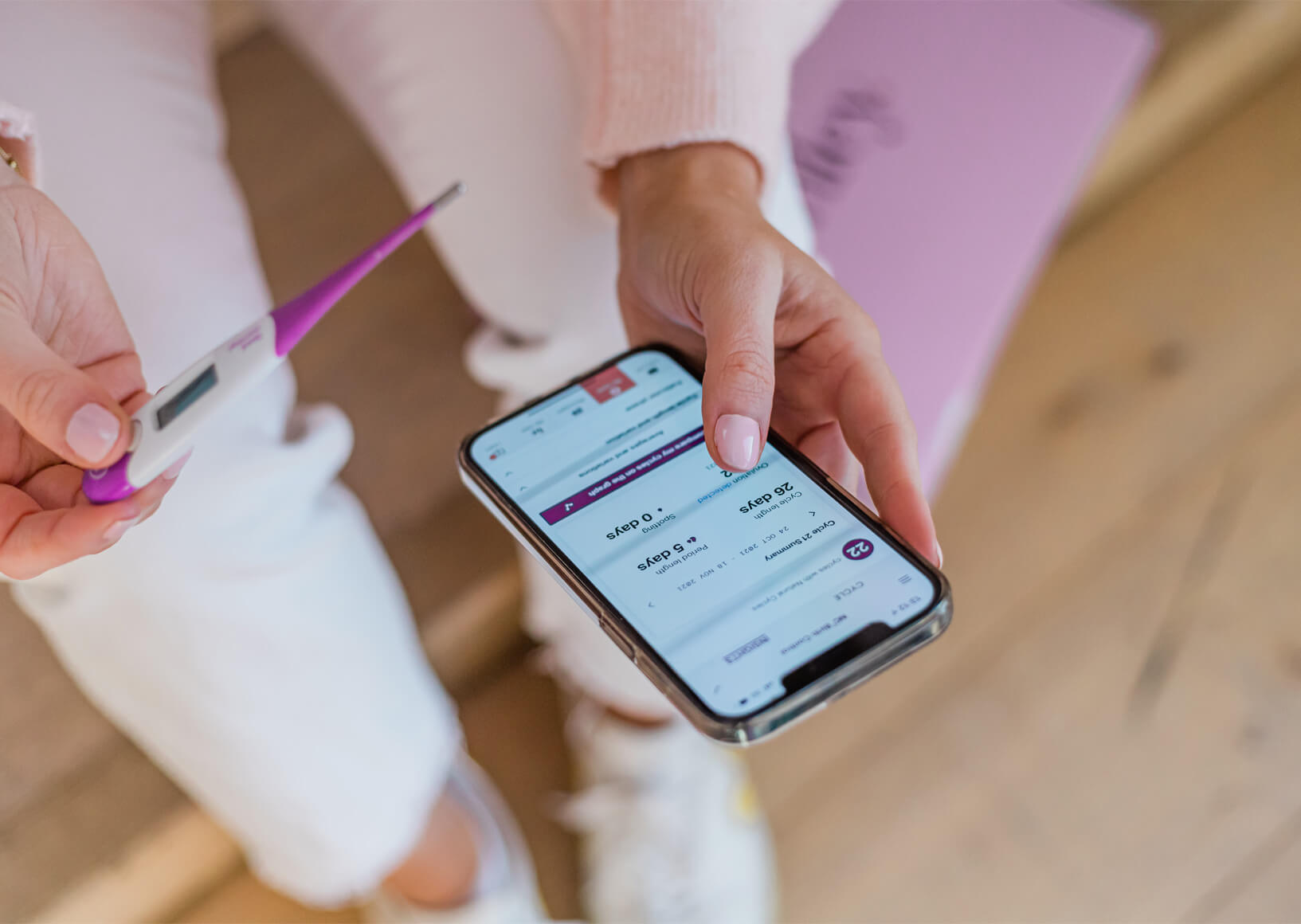It’s incredibly empowering to understand what’s happening in your body over the course of your menstrual cycle and know why you feel completely different from one end of the month to the other.
I recommend that everybody tracks their menstrual cycle. Each of our cycles are unique and we all experience different feelings and symptoms. Tracking your cycle enables you to spot trends in how you are feeling and put support strategies for yourself in place as a result.
The positive impact of tracking your cycle will be visible in so many aspects of your life, from; your training and performance, to your energy levels on a daily basis, to the way you are able to manage stress.
A LEVEL OF TRACKING TO SUIT YOU!
You can track your cycle to different levels of detail. The level of detail you choose to track your cycle in it completely up to you and your personal preference and goals.

Level 1 - Tracking the length of your cycle
The most basic level of tracking your cycle is simply taking note of the the length of your cycle i.e. Day 1 of your cycle is the first day of your period (first day of full red bleed, not brown spotting) until the first day of your next cycle. This will simply tell you how long your menstrual cycle is e.g. 27, 29, 30 days etc.
Having a regular cycle is one of the first most important things when it comes to to menstrual health. Anything from 24 – 35 days is considered healthy. Cycle length varies from woman to woman but the key thing is that it should be consistently the same length (whatever ‘normal’ is for you e.g. if you always get ~ 29 day cycles every month – that is YOUR normal). So, if you notice this beginning to change you know you may need to start asking why!
Level 2 - Tracking the length of your cycle + Symptoms
Level 2 provides an additional layer to simply the number of days in your cycle by also noting any symptoms you experience. Many of the period tracking apps let you include notes on each day.
Tracking symptoms allows you to spot patterns and helps you to make any necessary changes to your diet/lifestyle to help reduce these symptoms. E.g. If you notice you’re always more tired around day 25/26 of your cycle, it would be good to change the high intensity workout that you had planned to something more low-impact such as a walk. This is living in sync with your cycle!
Eve, Flo, Clue and FitrWoman are some fantastic (& free) tracking apps that will support you to track the days and symptoms of your cycle.
Level 3 - Tracking the length of your cycle + Symptoms + Ovulation
Ovulation is the main event of the menstrual cycle? Well, pinpointing ovulation in your cycle provides you with the full, most in-depth picture of your menstrual cycle.
Your basal body temperature rises after you ovulate until you get your next period due to the thermogenic effect that progesterone has. Taking your temperature under the tongue first thing in the morning with a basal body thermometer (with two decimal places e.g. 36.26’C) will enable you to pinpoint ovulation. Post ovulation you will see an increase in approximately 0.5’C in your basal body temperature.
I would highly recommend using an app like Natural Cycles, it makes the process so much easier and helps to avoid human error. The app helps you to record your temperature data and couples it with their algorithm to make interpreting your cycle much simpler.
If you are looking to identify your fertile window I would highly recommend Natural Cycles. It’s fantastic for both planning or avoiding pregnancy (i.e. non-hormonal form of contraception) – Natural Cycles is an FDA cleared form of contraception!
I’m a Brand Ambassador for the company as I stand behind them so much. This link will get you 20% off and a free thermometer.
Tracking your temperature is the most accurate way to pinpoint ovulation.

